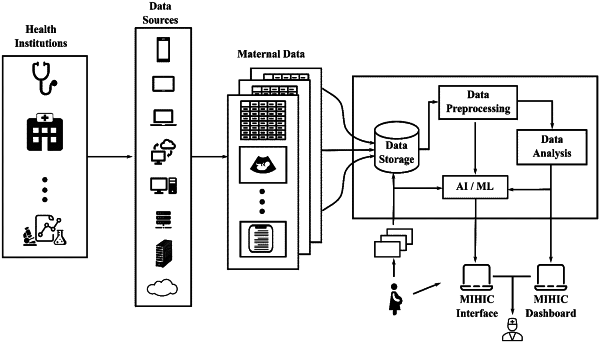| CPC G16H 50/70 (2018.01) [G06F 16/904 (2019.01); G06F 16/95 (2019.01); G06N 5/04 (2013.01); G06N 20/00 (2019.01); G16H 10/40 (2018.01); G16H 15/00 (2018.01); G16H 20/00 (2018.01); G16H 50/30 (2018.01); G16H 70/60 (2018.01)] | 20 Claims |

|
1. A system comprising:
a processor executing a machine learning model, wherein the machine learning model comprises a neural network comprising a hidden layer;
a database comprising a plurality of patient record data; and
wherein the system is configured to:
acquire, by the processor, the plurality of patient record data from the database, wherein the patient record data comprises a text data and an image data;
identify, by the processor, a data format of the patient record data;
segregate the patient record data into a structured data and an unstructured data;
pre-process, by the processor, the structured data and the unstructured data;
generate, by the processor, the machine learning model;
train, by the processor, the machine learning model with the patient record data;
receive, by the machine learning model, a new patient record data associated with a patient, wherein the new patient record data comprises a demographic data, a first clinical data comprising patient data comprising a patient blood pressure, a second clinical data comprising fetal data comprising a fetal heart rate, a medical data, and a genetic data of the patient, wherein the patient is a maternal woman;
analyze, by the machine learning model, the new patient record data to discover a pattern in the patient record data using the database;
predict, by the machine learning model and based on the pattern, a maternal risk score for each health risk factor of a first plurality of health risk factors associated with the patient, a fetal risk score for each health risk factor of a second plurality of health risk factors associated with a fetus of the patient, wherein the maternal risk scores each represent a probability of a maternity-related healthcare event of the patient and the fetal risk scores each represent a probability of a fetus-related healthcare event of the fetus of the patient;
calculate, by the machine learning model, an overall risk score from the maternal risk score of each of the first plurality of health risk factors and the fetal risk score of each of the second plurality of health risk factors using a statistical technique, wherein the overall risk score is a maternal and infant health insights and cognitive intelligence (MIHIC) score;
receive a feed-back from a clinician relating to an observed healthcare event of the patient or the fetus of the patient;
update the machine learning model with the feed-back; and
update the database with the new patient record data; and
wherein the machine learning model is a self-learning model comprising a feed-back layer that enables the machine learning model to learn continuously from the new patient record data and the feed-back from the clinician to continually improve the prediction of the maternal risk score of each of the first plurality of health risk factors, the fetal risk score of each of the second plurality of health risk factors, and the overall risk score.
|